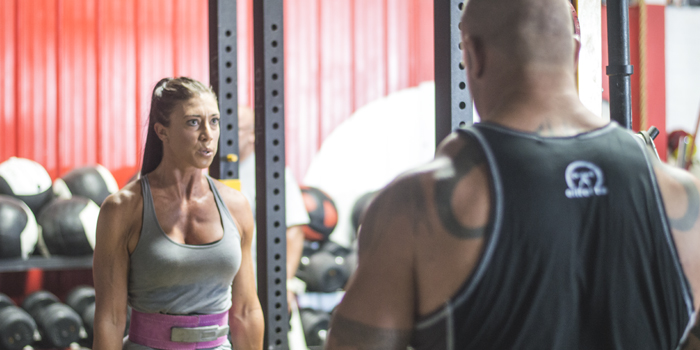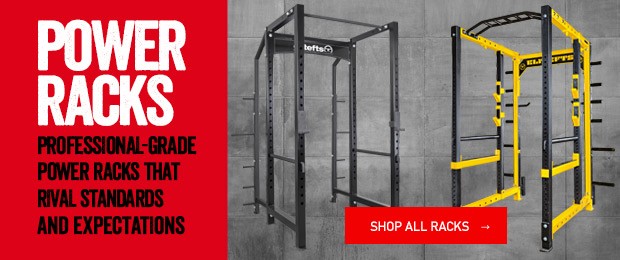
As a practicing physical therapist and someone who spends a lot of time in a gym, I have noticed a growing trend towards “functional training.” While this in itself is not a terrible thing, how individuals are defining and incorporating functional training into their programs has raised a red flag. What exactly is functional training? It is a form of training aimed to better prepare or mimic activities of daily life. While this is the most basic definition of the term, you may get hundreds of different responses depending on who you ask:
- “It must be a CKC activity.”
- “Exercises that challenge the core.”
- “It incorporates a balance component.”
This is how I define functional training: A basis of training aimed to maintain or progress a specific individual’s ability to perform general activities of daily living and/or specific daily tasks.
What is considered “functional” for one individual may not necessarily be a functional activity for another. Do powerlifters, football players, and your grandfather who had a total hip replacement last year all perform the same daily activities? Absolutely not! Therefore, functional training for a powerlifter is going to incorporate activities to better progress their competition lifts, while functional training for an individual following THA would involve more general strengthening activities to assist with stair negotiation and getting in and out of a car.
Push, Pull, Press, Carry
These movements are the Core 4, as I like to call them — these terms should be the backbone of everyone’s programming (baring any injuries). I repeat PUSH, PULL, PRESS, CARRY. Try to think of a daily function that does not incorporate one of these four terms. Opening a door, lifting a box from the floor, getting out of a car, or carrying home groceries — all of these activities can be placed into one of the four above categories. From an elderly individual to a strongman competitor, these Core 4 should be at the center of everyone’s programming.
Let's break things down and better explain the terms push, pull, press, and carry. To begin with, “push” and “press” are actually synonymous terms. Due to the fact that almost everyone is familiar with the terms bench press, overhead press, etc., I have kept the categories to include pressing as a term. In actuality, all exercises should be broken down into upper body pushes and pulls, lower body pushes and pulls, and carries. An upper body push would be a movement in which force is exerted to move an object away from your body.
A perfect example is a barbell bench press: the bar is pushed away from the chest. Opposite to a push, an upper body pull would involve exerting force to move an object toward the body. A bent over barbell row would be an excellent example of an upper body pull. You can easily apply the same rules as above to the lower body. The concentric portion of a squat involves pushing the weight away from the horizontal midline while a deadlift involves pulling the weight towards the horizontal midline of the body. The only exercise where this rule does not apply is the trap bar deadlift. Even though the movement involves the bar moving proximal, biomechanically speaking, the trap bar deadlift is more similar to a squat than to a conventional deadlift.
That leaves us with one last term to define: the carry. It doesn’t take a genius to figure this one out, but just in case, it is simply holding an object in one or both hands and walking. A day doesn’t go by that every single one of us does not perform a carrying activity in some capacity. However, very few of us actually train this movement. In fact, carrying may be THE most functional exercise (aside from sit to stand), as we rarely pick something up we do not plan on moving somewhere else. Carrying exercises are a great way to strengthen your core, increase your squat, and burn some extra calories without stepping on a treadmill. Farmer’s walks, suitcase carries, and yoke carries are just a few of the many examples of carrying exercises.
A Simplified List of Above
Push:
- Squats
- Trap Bar Deadlifts
- Dips
Pull:
- Rows
- Deadlifts
- Pull-Ups
Press:
- Overhead Press
- Bench Press
Carry:
- Farmer’s Walks
- Yoke Carry
- Suitcase Carry
Bilateral movements should be the primary activities included in any programming. Take a look at upper body pulling — barbell rows are an example of a bilateral movement. Performing single-arm dumbbell rows or alternating dumbbell rows would be an example of an asymmetrical exercise or a secondary movement. The list above is not exhaustive, as there are many variations of benching, squatting, deadlifting, and overhead pressing. If the variation involves a bilateral, symmetrical movement, then it can be considered a primary movement when programming!
You may be asking where all the core exercises are. If loaded appropriately, a majority of the previously listed exercises are going to work your core. We have all seen people attempt primary movements on unstable surfaces arguing that they are further challenging their core. However, is that truly the case? I found several research articles comparing the use of an unstable surface (i.e. Bosu ball) versus stable ground when performing an exercise. A study by Willardson et al. (1) investigated core muscle activation when using a Bosu ball versus stable ground and found that there was no advantage to using a Bosu ball for the squat, deadlift, overhead press, or curling exercises.
With that being said, it was recommended that these exercises be performed on a stable surface without the fear of losing the potential core muscle training benefits. An article by Li et al (2) using electromyography comparing squatting on a Reebok core board and stable ground found similar results to the Willardson study. No significant difference was found in the EMG readings of lower extremity muscles during stable and unstable exercises. An increase in muscle activation was found when weight load was increased, regardless of surface.
Properly Incorporating Accessory Lifts
We have discussed the importance of “push, pull, press, carry,” as well as what differentiates a primary movement from a secondary movement. But how should we incorporate these secondary or accessory lifts? Well, simply said, it is exactly as it sounds: accessory exercises to your main lifts. While everyone should be performing some variation of the primary movements discussed earlier, not everyone will be performing the same accessory exercises. This is where each individual’s goals, background, weaknesses, and daily functional activities are going to dictate what their programming looks like.
A few things to keep in mind when incorporating accessory lifts into your program:
- A program should never be made up of only secondary movements. This is a common mistake I notice many individuals make in the gym.
- Secondary movements should be incorporated for a purpose. Each should specifically help you reach a goal.
- Accessory lifts can be variations of the primary lifts such as changing the base of support or performing an asymmetrical movement pattern.
- Balance training is a secondary exercise.
Back to the Basics
The SAID principle is one of the most important concepts to understand and keep in mind in the performance and rehabilitation science industry. SAID stands for "specific adaptation to imposed demands." Or in other words, the body will adapt to the stresses we place on it. Want to get better at squatting? Then go squat — it’s that simple! Many people get so caught up in all of the accessory exercises and so-called “functional patterns” that they forget to actually get under the bar and squat. If your goal is to improve your squat and be strong in this movement (in and out of the gym), then your focus should be on training the squat movement. My point is that no amount of hip thrusters, single-leg bridges, hip extensions, or whatever that exercise is where people lie on their back and pretend the Smith machine is a leg press (*facepalm*) are going to improve your squat if you are not loading and training the squat movement.
You can also apply the SAID principle to everyday functional activities. Even if your goal isn’t to deadlift 500 pounds from the floor, the deadlift movement pattern is still important to train. Want to decrease your risk of back injury when picking something up off the floor? Then properly load and train a pulling pattern. I can tell you right now, every single one of my clients learns how to hip hinge and pull objects from the floor. I can almost guarantee an individual who has been actively training the deadlift will have less difficulty and risk with lifting a box off the floor than someone who isn’t training the pull from the floor.
As a rehabilitation and injury prevention specialist, I can tell you that one of the biggest predictors of future injury is contralateral muscle imbalances. Having decreased hip ROM on one side compared to the other side can easily lead to future hip, knee, or back pain. Rounded shoulders due to tight pecs and weak periscapular muscles can result in shoulder impingement, neck, and upper back pain. In my experience, performing an exercise routine primarily made up of unilateral movements, unstable surfaces, and complicated movement patterns only further exacerbates these imbalances. To put it simply, the more difficult the movement pattern, the more your body compensates and finds the path of least resistance. By performing bilateral pushing, pulling, and carrying activities, you are not only lowering the risk of compensations and muscle imbalances, but also mimicking activities most like those performed on a daily basis.
Why All the Nonsense
YouTube, Instagram, Facebook, the Internet, or poorly written magazines — I am not sure who to blame for the seemingly growing trend of creating your own exercises. I have seen people barbell squatting with 135 pounds or more on a Bosu ball. I’ve read a comment telling a father who was pushing his two sons on a swing that if he stood on one leg he could consider it a functional exercise. I have been told that I should perform single-arm dumbbell flat bench presses with my feet elevated to challenge my anterior oblique sling (which is true, but not appropriate for most individuals). I have watched individuals load up a lat pulldown machine to max capacity then perform step-ups while holding onto the bar. The best part about it all, when asked why each is performing the above exercises, I get a common response: “functional training.”
Instead of overcomplicating training, we need to get back to the basics. Focus your training around the core movements (push, pull, press, and carry) and then incorporate your accessory exercise to meet your specific goals. Make your program “functional” by designing it to fit your needs, NOT by incorporating non-traditional exercises that challenge multiple body systems. When you get down to it, there aren’t too many more functional tasks than squatting, pushing, pulling, and carrying activities.
Resources
- Willardson JM, Fontana FE, Bressel E. “Effect of surface stability on core muscle activity for dynamic resistance exercises” Int J Sports Physiol Perform. 2009 Mar;4(1):97-109.
- Li Y, Cao C, Chen X. “Similar Electromyographic Activities of Lower Limbs Between Squatting on a Reebok Core Board and Ground.” J Strength Cond Res. 2013 May;27(5):1349-1353
Brent received his Bachelors of Exercise Science, Pre-Physical Therapy Concentration from The University of Akron in 2012. After graduating from the UofA he attended New York University to receive his Doctor of Physical Therapy degree. During his DPT education, he became a Certified Strength and Conditioning Specialist (CSCS), EXOS Performance Specialist (XPS), Functional Movement Screen Certified (FMS), Fascial Movement Taping Certified (FMT), and Y Balance Test Certified (YBT). Upon graduation with his DPT, he began working at a private out-patient orthopedics/sports rehabilitation physical therapy practice in NYC (Danford PT).









